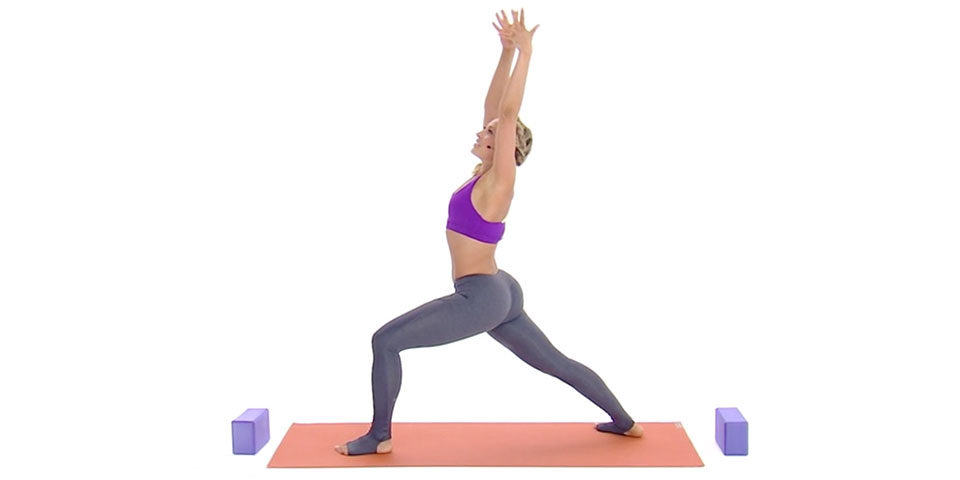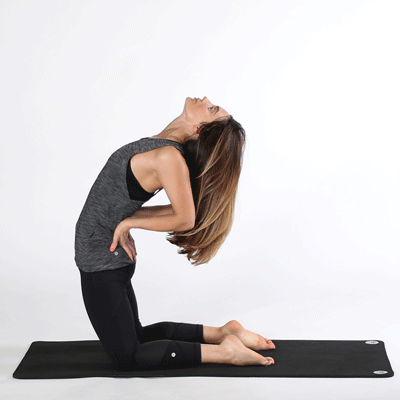
Many yoga poses cause strain on the shoulders, which can lead to injuries. Before you begin a new exercise in yoga, it is important that you understand the anatomy of your shoulder joint. The three bones that form the shoulder joint include the scapula or shoulder blade, the clavicle (collarbone), and the upper arm bone, the humerus. These bones are connected at the elbow joint and each has a unique range.
The quads are responsible to knee extension. The gluteus maximus and the front and back thigh muscle are joined by the gluteus maximus. These muscles are responsible for hip flexion, abduction, and hip flexion. These are just four muscles that are important for yoga poses. It is easy to see why each of these muscles is important. As you do yoga poses, you will be able feel which one is involved in each pose.
The hamstrings, which are responsible for knee extension are derived from the pelvic tuberosity. They also contribute to hip extension. They are vital for many yoga poses. But, without proper alignment, these muscles can be hard to access. Although it is more difficult to align your arms with your chest, this will allow you to be more flexible and improve your balance. Once you have a better understanding of the anatomy of the hamstrings and how they work together, you can safely move on to the next one.

The hamstrings can also be benefitted from yoga. The hamstrings, which are responsible for knee extension and originate from the pelvic tuberosity, are also responsible. They assist in hip flexion as well as plantar flexion. The hamstrings are essential for many poses in yoga because they are responsible to many movements in the body. This will help you choose the best one for you.
Do not overstretch the SI joint while doing the balancing poses. In the end, we should aim for a balanced, even range of motion and a strong core. Also, consider how the pose is aligned. A joint that is too tight can cause pain in the knee. This can lead you to injuring yourself. Instead, use props that can help you achieve a better alignment.
Overmobilized Capulae: Although it can give the appearance that there is a twist to it, this does not happen in this position. Spine rotation can also be affected depending on how your arm is placed. The meniscus moves backwards when it is fully extended. A properly aligned pelvis will allow the body's muscle to work in the right direction. You should have a balanced distribution of your spine and hips.
For a smooth range of motion at the knee joint, the pelvic joints must be flexed. The pelvis, scapula and sacrum should be in a neutral position. If they aren't, it can cause spinal flexion which may lead to injury. If this is the case, it may be better to avoid this pose. While the leg extends fully, the meniscus must be pushed to one side of the joint.

Three bones make up the pelvis: femur (left) and thighbone (right). These bones are round and create a cup-shaped structure. The pelvis is the ball-shaped bone that runs along the top of the thigh. The femur also connects the lower leg bones. Each of these three bones have a slightly different shape or angle. This can affect how easy and strong some yoga poses are.
The anatomy of the yoga poses is vital for beginners. It will become easier to correctly perform the poses once you are more familiar with your body. David Katz is a world-renowned authority in anatomy and yoga. His book Anatomical Position explains the basics of anatomy in great detail. He provides an explanation of the anatomy and effects of each pose on the body. Once you're familiar with the anatomy, it is possible to apply it in your daily routine.
FAQ
What is a good exercise routine?
To stay fit, you need to exercise regularly. You don't have to do the same type of exercise every day, it doesn't really matter. Consistency and consistency are the keys to success. For you to get results, you have to stick with it for a longer period of time.
Begin with a small amount of daily exercise (like walking). You can gradually increase the amount of exercise you do until you have 30 minutes each day. You could do this by running, swimming, weight training or yoga.
Try to make sure you exercise on all days of the week. You should not miss any sessions unless there is a good reason.
When exercising outside, make sure you have the right clothing and shoes. It is important to take into account the weather conditions, and how they may affect your ability to exercise safely.
When you exercise, drink plenty of fluids. Avoid alcohol consumption during this time as it can lead to dehydration. Also, avoid caffeinated drinks such as coffee, tea, and cola. These drinks may give you energy but also dehydrate your body.
At first, it's normal to feel tired after you finish your exercise routine. Keep going with your workouts and you'll soon feel more energized.
Is Cardio Better Than Strength Training?
Both are equally good. But cardio is a much better choice if you want to gain muscles faster.
Cardio burns more calories in a minute than strength training and more fat.
Strength training is a great way to build muscle mass. However, it takes more effort than cardio.
Which dietary supplement is good for weight loss?
You need to exercise and diet in order lose weight. Some people find that certain supplements are helpful.
Research suggests that omega-3 fats may aid in weight loss. Omega-3 fatty acid is an essential fat that is important for brain function as well as cell membrane integrity. They can be found in seafoods like salmon, tuna or shrimp, as well as cod liver oil.
Some research has shown that green tea could be helpful in weight loss. The antioxidants in green tea, catechins and other compounds may increase metabolism and promote weight loss.
How many calories should I eat daily?
This varies from person to person. The average is 2000 - 2500 calories per day. Based on your age, gender, height and activity level, you will need to calculate how many calories you require.
How many times a week should I exercise?
It all depends on your time and the type of exercise that you enjoy. You should do moderate-intensity aerobic exercise three to five days per week. It is important not to overdo it. Consistent exercise is essential to achieving maximum benefit from your workouts.
Which exercises are best for me?
It really depends on the type of fitness goal you have. Some people prefer endurance sports like swimming, cycling, or running. Some people enjoy lifting weights and using resistance bands. There are so many different types of exercise programs available today. You can choose the one that best suits you.
Is it possible to go to the gym every day of the week?
You can go to the gym seven times a week, but not at once. You must find a time you can do it without feeling exhausted and depleted.
This will help you stay motivated and keep you energized for other activities.
Also, ensure you eat healthy during these times. This will ensure you don’t feel tired and sluggish going to the gym.
Last, you must make sure that there isn’t another thing competing for your attention. You might want to avoid working out on school nights if you have kids. They can distract you from your exercise routine.
Statistics
- An estimated calorie range for moderately active adult males falls between 2,200 to 2,800 calories per day, depending on age. (eatright.org)
- Cardmembers earn 5% Back at Amazon.com with a Prime Credit Card. (amazon.com)
- Candidates and applicants must pass all four tests at 70% (minimum level) to graduate from Basic Deputy U.S. Marshal (BDUSM) Training. (usmarshals.gov)
- Get free shipping and 25% off today. (healthline.com)
- The PRS enabled risk stratification for overall prostate cancer and lethal disease with a four-fold difference between men in the highest and lowest quartiles (HR, 4.32; 95% confidence interval [CI], 3.16-5.89). (pubmed.ncbi.nlm.nih.gov)
External Links
How To
What nutrients does a man need daily?
For healthy growth and development, men need to eat a balanced diet. The body needs vitamins, minerals as well as proteins, carbohydrates and fats.
Specific nutrients are also required by the male body at different times during the day. To give you an example, the body uses energy it receives from food to make hormones and antibodies. When you get up, protein is used to repair and build muscle.
Your body stores extra energy as glycogen and breaks down fat at night. Your body will still need nutrients, but it will require fewer calories during this time. You can have a snack at night if you feel hungry.
For your body to function properly, it needs adequate amounts of protein and carbs. After a hard workout, muscle soreness may occur.
To prevent this from happening, you need to consume carbs or protein within two hours. Your body will breakdown stored glycogen and provide you with glucose for energy.
You must also eat protein right after you finish your workouts. This prevents muscle tissue being destroyed while you're sleeping.
During periods of intense physical activity, your body produces lactic acid. It builds up in your bloodstream, which can lead to fatigue. To avoid this, you should eat foods rich in carbohydrates, such as fruits and vegetables.
Carbohydrates provide energy for your body to recover after strenuous exercise.
In addition, you may want to include lean meats, fish, eggs, milk, cheese, yogurt, beans, nuts, and seeds into your diet.
All these foods are high-quality sources of protein. Protein promotes muscle growth and repairs damaged tissues. Protein also supplies the amino acids your body requires to make sex hormones, such as testosterone.
Good skin, hair, and joint health requires adequate dietary fats. Healthy men require between 20% and 35% of total caloric intake from fat.
Fat is good for your heart and helps you fight cancer. It keeps your brain healthy and functioning well.
Vegetable oils such as sunflower oil and soybean oil can provide most of your fat needs.
These oils have high amounts of monounsaturated oil fatty acids, (MUFAs). MUFAs reduce cholesterol and inflammation. They protect your cells and prevent damage from free radicals.
Saturated fats (SFAs) are found mostly in animal products like meat, dairy products, and butter. SFAs can raise LDL ("bad") cholesterol levels and increase triglycerides. They promote weight gain as well as belly fat.
Plant-based fats such as vegetable oils, seeds, nuts and grains contain polyunsaturated (PUFAs). PUFAs reduce inflammation and improve cardiovascular function. They can also control blood sugar levels and cholesterol.
Low HDL ("good") cholesterol can lead to erectile problems in men. A high intake of saturated fats leads to higher levels of bad cholesterol.
Men who eat a lot of red meat or pork develop prostate problems because they contain large amounts of nitrates. When heated, nitrates are converted to nitrosamines. These compounds can cause lung cancer.
Most processed meats contain nitrites and other harmful chemicals. They should be avoided.
The American Heart Association recommends that you limit your intake of red meat to 2 per week. Instead, choose poultry and fish, legumes, tofu or whole grain bread as your main source of protein.